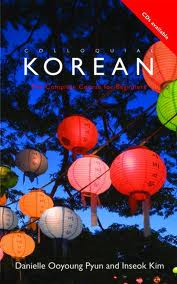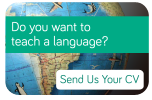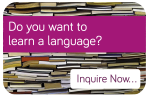The Colloquial series from Routledge covers many languages and aims to provide a complete course for beginners, they are very popular and many of the books are now in their 2nd or 3rd edition. However, this is a little misleading and it is probably a ploy by the publisher to make certain books sound more up to date, for example, Colloquial Korean which was originally published in 1996. Colloquial Korean is advertised as being a book appropriate for both independent students and those taking class with a step-by-step approach which uses realistic language as it is used in Korea today. The contents page shows how there is a preface, acknowledgements, an introduction, 20 lessons and then the textbook finishes with a key to the exercises, vocabulary glossary, glossary of terms and grammar index. The preface explains how in the 1980s a new emphasis started on language proficiency rather than language knowledge, as a result this book attempts to teach the Korean language to help the student be able to use the language rather than just know something about it.

The author goes on to explain that this book can be used by those planning to visit Korea, undertaking an evening class, or as a supplementary textbook for a university course. Translations for certain sentences are provided, but the author doesn’t provide translation for every sentence or example; this way the student will have to work out the meaning for themselves as a way of testing comprehension. Furthermore, each lesson is divided into six sections with a chapter summary, dialogue, vocabulary, grammar points, exercises and cultural points.
Before getting started on the lessons there are 26 pages on Korean pronunciation and the alphabet. This interesting approach includes clear instructions on how each sound should be pronounced, listening exercises, character writing practice, and even mouth illustrations to help students with proper tongue placement for certain sounds. For Korean characters there are hand drawn pictures which show line order and arrows to show in which direction the line should be made, it is quite a personal touch which is also good for encouraging the student to try writing in Korean. It is perhaps one of the most comprehensive and easy to follow guides to the basics of Korean that I have ever seen in a book designed for self-study. Any student who completes all of these pages will be more than ready to take on the main lessons.
"Translations for certain sentences are provided, but the author doesn’t provide translation for every sentence or example; this way the student will have to work out the meaning for themselves as a way of testing comprehension."
The first lesson is entitled ‘Greetings’ and a short summary box explains what will be learnt in this section, for example writing Korean names, and grammar points like sentence endings, and topic case marker. It is also important to note that no Romanization is used in this book. This is a bit controversial as many textbooks include Romanization to help students develop both their pronunciation skills and to help maintain a steady pace in their learning rather being bogged down in trying to read Korean. The “dialogue” exercises in each chapter are followed by translations in English and then a vocabulary list is provided. Overall the chapters are very clear and easy to follow; the author has really kept all of the relevant points and has made sure not to add any unnecessary topics or grammar points. While working with this book students will also go over topics like directional grammar, shopping, meeting friends, and visiting a friend’s house. Later lessons also include reading passages and the exercises become increasingly more complicated.
Unfortunately, despite its clear popularity from the number of times it has been reprinted, Routledge haven’t created a follow up book with this same great format. Nonetheless Colloquial Korean is one of the best self-study books that can be found, and although the author has stated that it could be used as a supplementary textbook for a university course it could easily be used as a main textbook.



